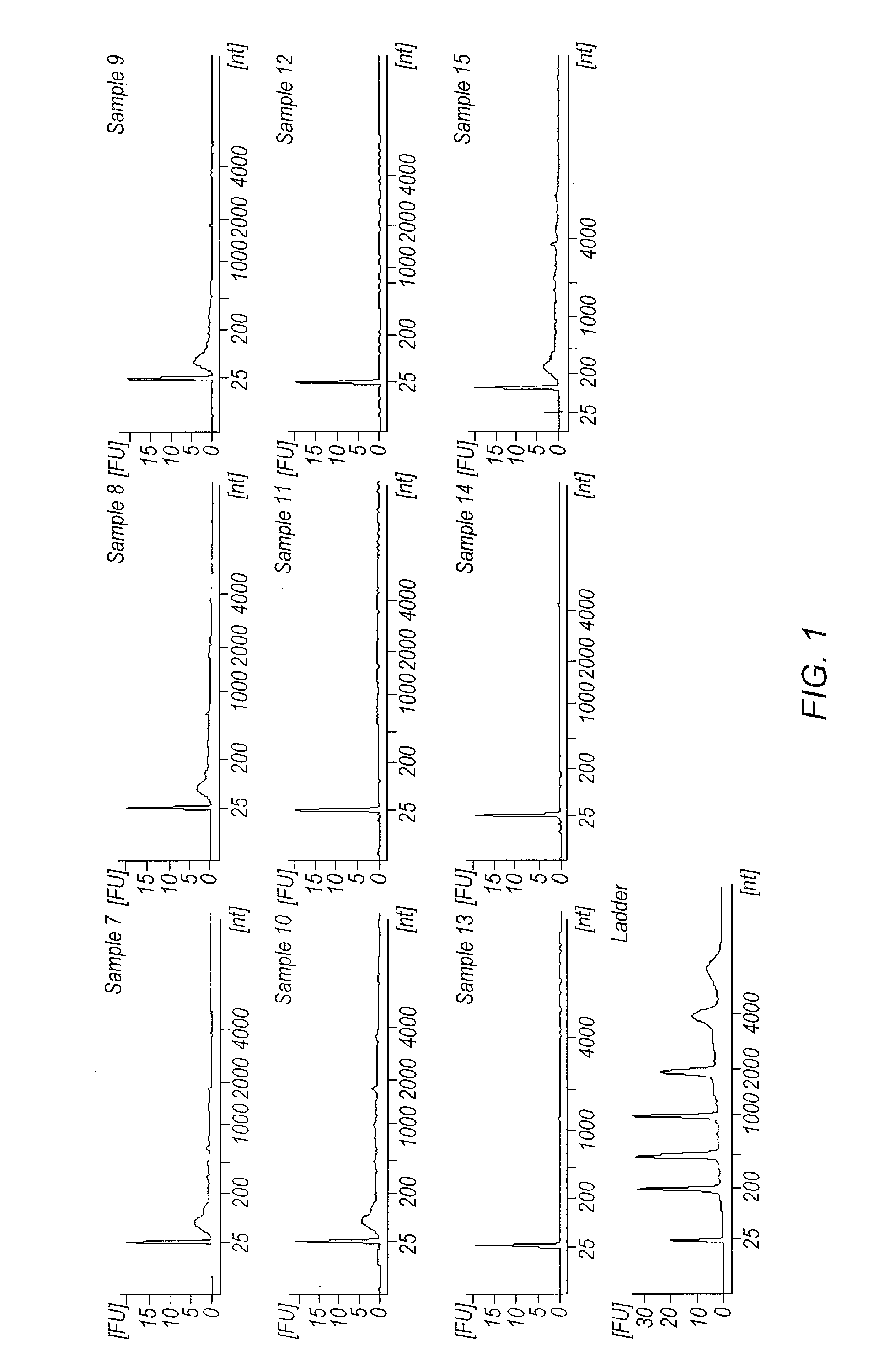Methods for fractionating and processing microparticles from biological samples and using them for biomarker discovery
a technology of biological samples and microparticles, applied in the field of molecular biology and clinical diagnostics, can solve the problems of expensive specialized equipment, laborious, time-consuming, etc., and achieve the effect of reducing the cost of specialized equipment, and improving the quality of li
- Summary
- Abstract
- Description
- Claims
- Application Information
AI Technical Summary
Benefits of technology
Problems solved by technology
Method used
Image
Examples
example 1
Fractionation of Populations of Smaller and Larger MPs from Tissue Culture Media
[0030]Conditioned media was obtained from several human cancer cell lines (A549 lung cancer, CLL lymphoma cells, and HL60 liver cancer cells) growing as adherent cells, that is, the cells were attached to the bottom of the culture vessels. Typical volumes of conditioned media from adherent cells range from about 5 ml-15 ml per 100 mm tissue culture dish. In general, the conditioned media may be loaded into a syringe of appropriate capacity for the volume of sample, by aspirating the media into the syringe. Syringe filters having pore sizes effective to trap MPs from the conditioned media are then attached to the outlet port of the syringe. Alternatively, the plunger of the syringe may be removed, the syringe filter(s) then attached, and the conditioned media then loaded by pouring it into the barrel of the syringe and then reinserting the plunger. In either case, the end result is a syringe containing th...
example 2
Extraction of RNA from MPs Recovered from Conditioned Media
[0032]Extraction of RNA from MPs was carried out using a proprietary reagent (BiooPure RNA Extraction Reagent) developed at Bioo Scientific, which is similar to Trizol (sold by Sigma and other vendors). Trizol has also been used for extraction of MPs captured from conditioned media on filters. Trizol and BiooPure are both single-phase reagents containing phenol and guanidinium, and the extraction protocols are similar. RNA was extracted by thawing the preparations (described in Example 1) and adding 0.1 ml of 1-bromo-3-chloropropane (purchased from Sigma Life Science Research products, cat #B9673), vortexing the prep for ˜20 sec, then centrifuging the prep in a microcentrifuge for ˜15 min at 4 C. The resulting separated aqueous phase (top phase) was transferred to a new 1.5 ml tube and mixed with 50 μg of linear polyacrylamide (Bioo Scientific), followed by mixing with 0.75 ml of isopropyl alcohol. The prep was stored at roo...
example 3
Quantitative Detection of microRNAs in RNA Extracted from Size-Fractionated MPs Recovered from Conditioned Media
[0033]Recovery of RNA from the MPs captured on filters from conditioned media was verified by using a commercially available microRNA-detection assay from Life Technologies Inc. This assay is based on reverse transcription followed by quantitative PCR(RT-qPCR). We have also used this assay to detect microRNA in preps from MPs recovered from human serum.
[0034]The reverse transcription step was carried out in a 7.5 μL volume containing 2.5 μL of RNA prepared as described in Example 2 along with approximately 50 units of MMLV Reverse Transcriptase (Bioo Scientific), standard buffer components, and reverse transcription primers for several microRNAs (miR-150, miR-191, and miR-337), provided in the Life Technologies assays. Reactions were incubated according to the Life Technolgies protocol. For the qPCR step, 1.5 μL of each reverse transcription reaction was used as template f...
PUM
| Property | Measurement | Unit |
|---|---|---|
| pore size | aaaaa | aaaaa |
| pore size | aaaaa | aaaaa |
| size | aaaaa | aaaaa |
Abstract
Description
Claims
Application Information
 Login to View More
Login to View More - R&D
- Intellectual Property
- Life Sciences
- Materials
- Tech Scout
- Unparalleled Data Quality
- Higher Quality Content
- 60% Fewer Hallucinations
Browse by: Latest US Patents, China's latest patents, Technical Efficacy Thesaurus, Application Domain, Technology Topic, Popular Technical Reports.
© 2025 PatSnap. All rights reserved.Legal|Privacy policy|Modern Slavery Act Transparency Statement|Sitemap|About US| Contact US: help@patsnap.com

